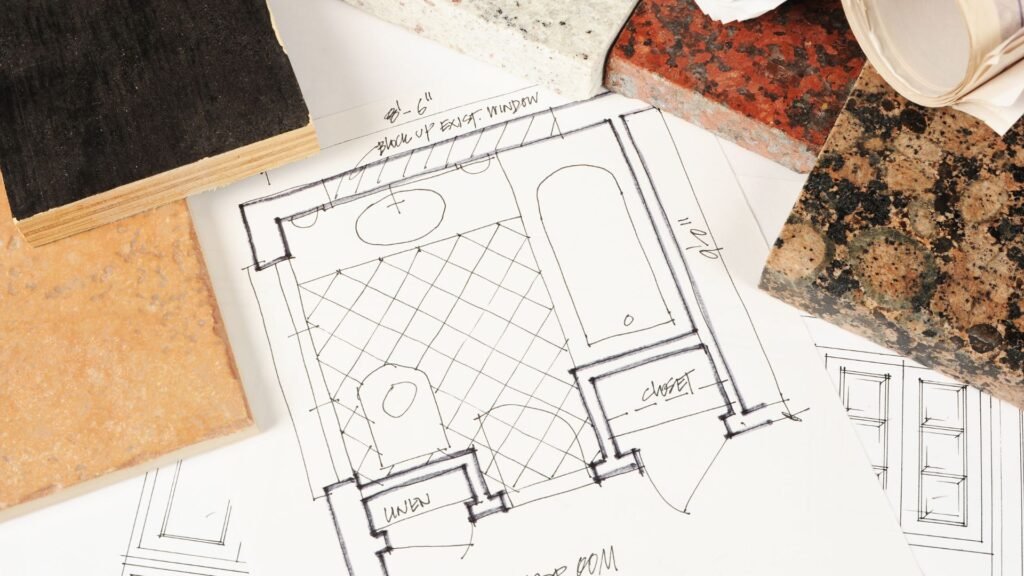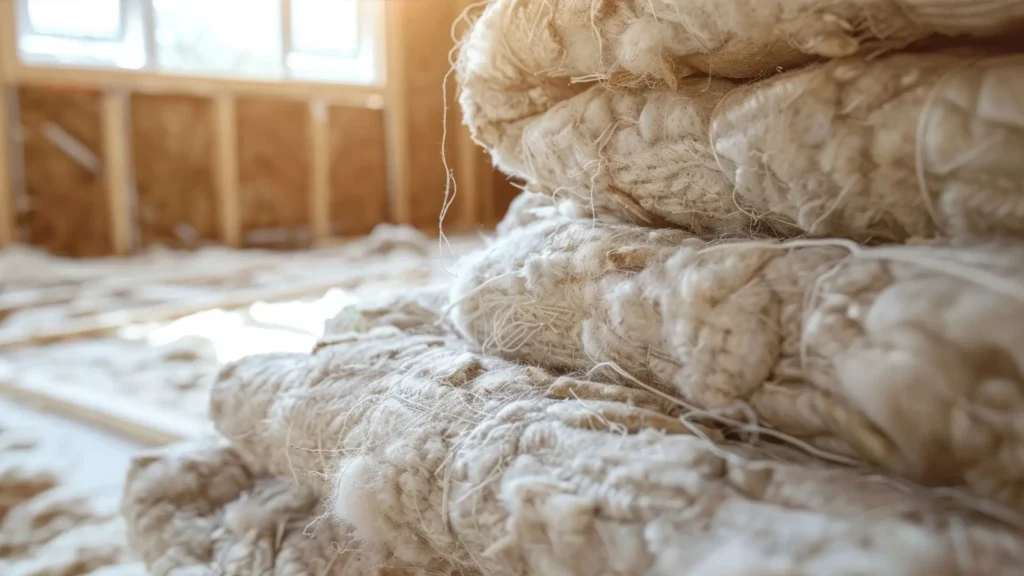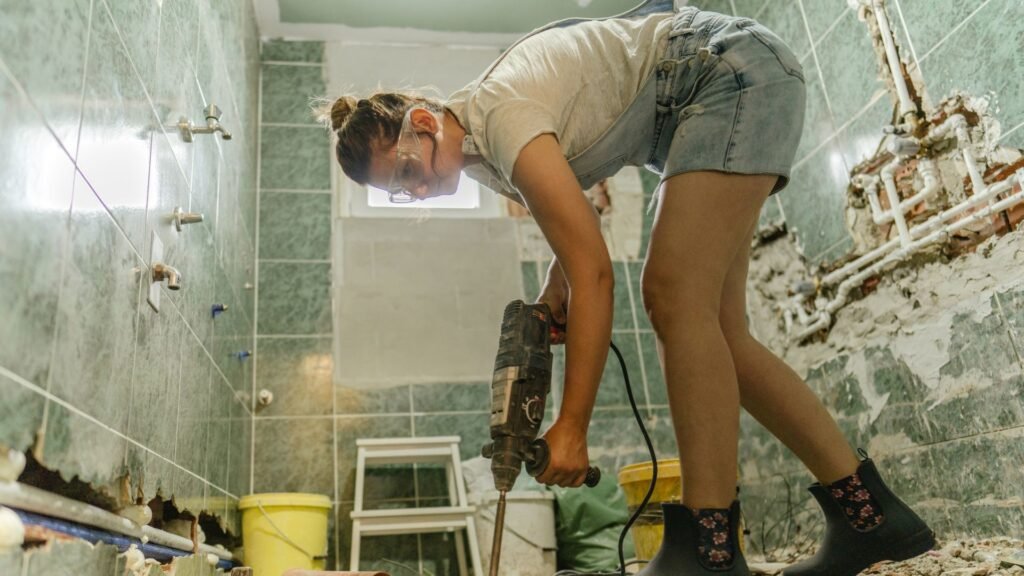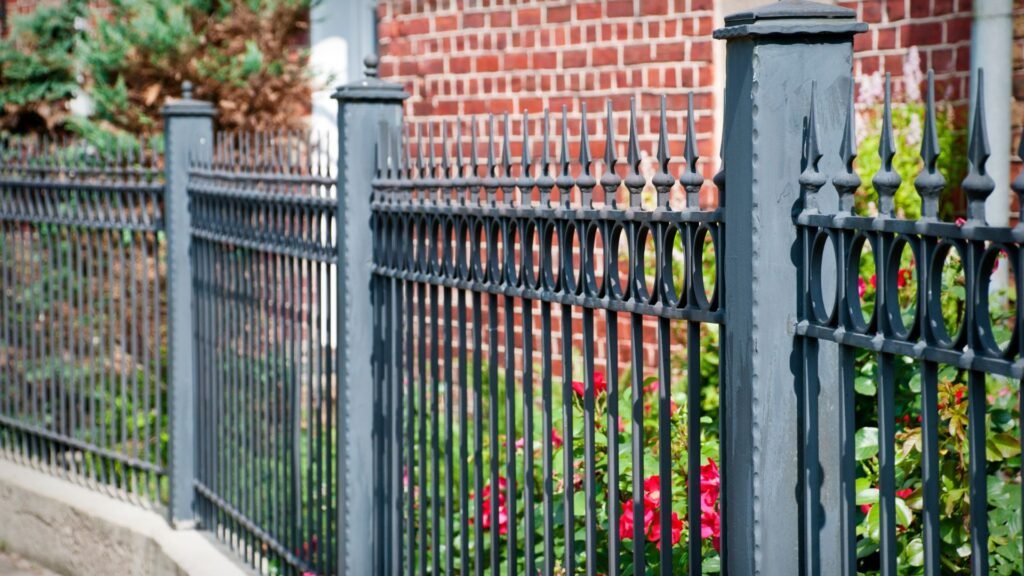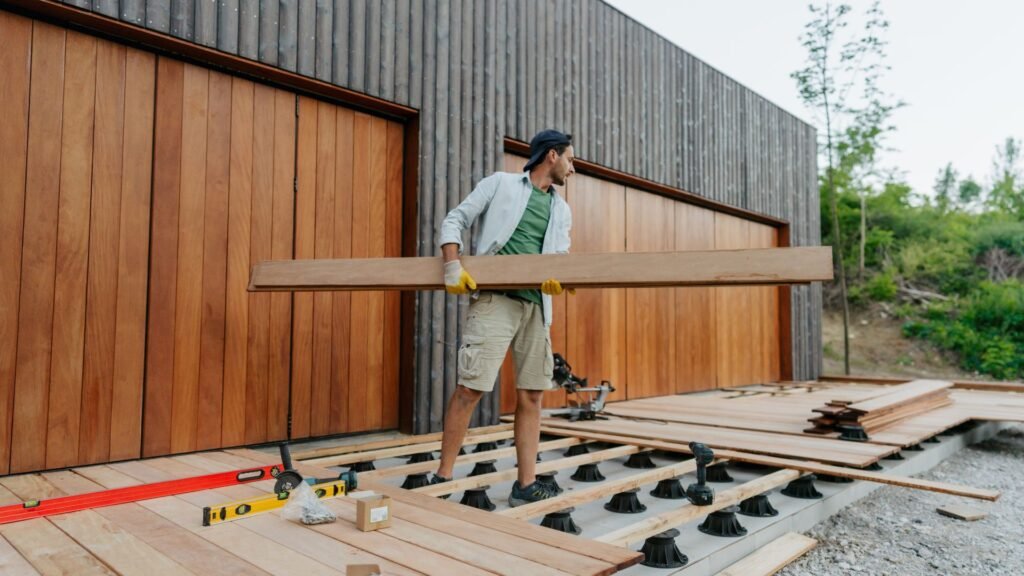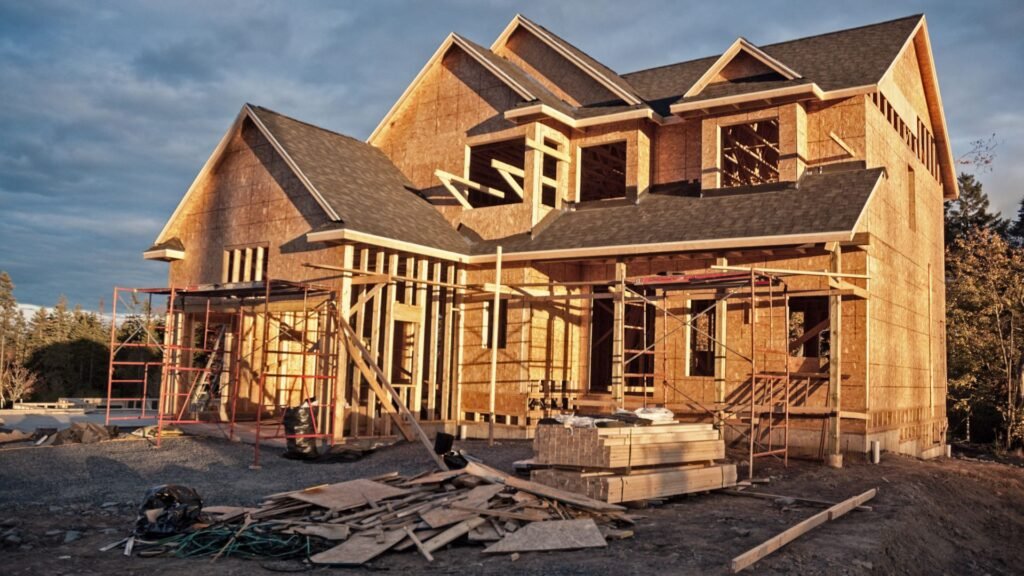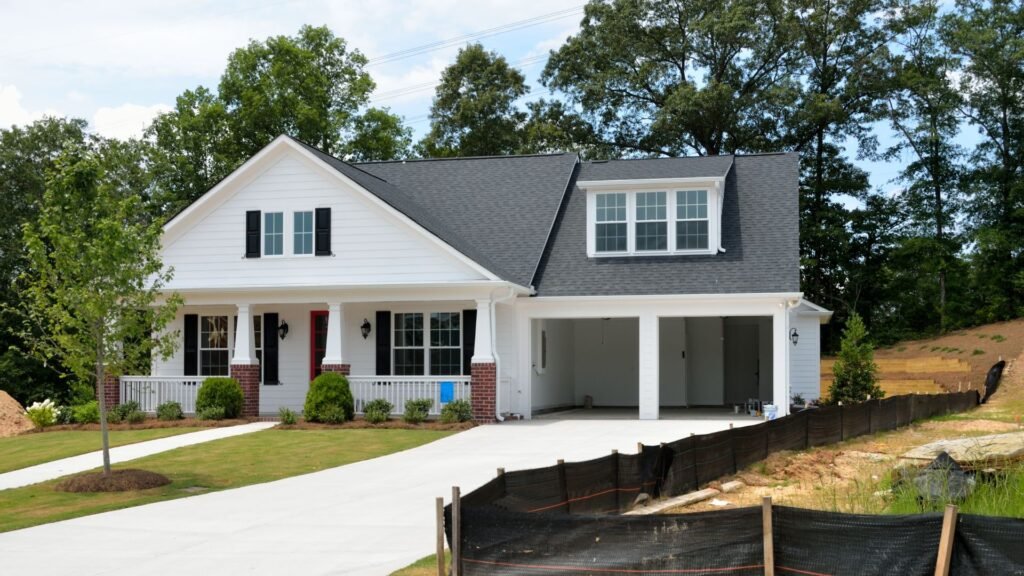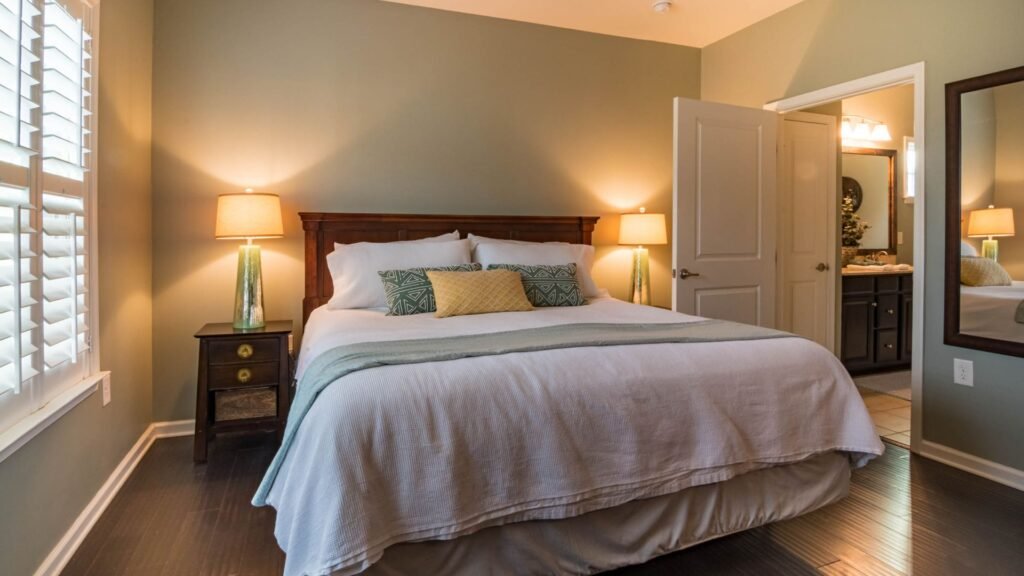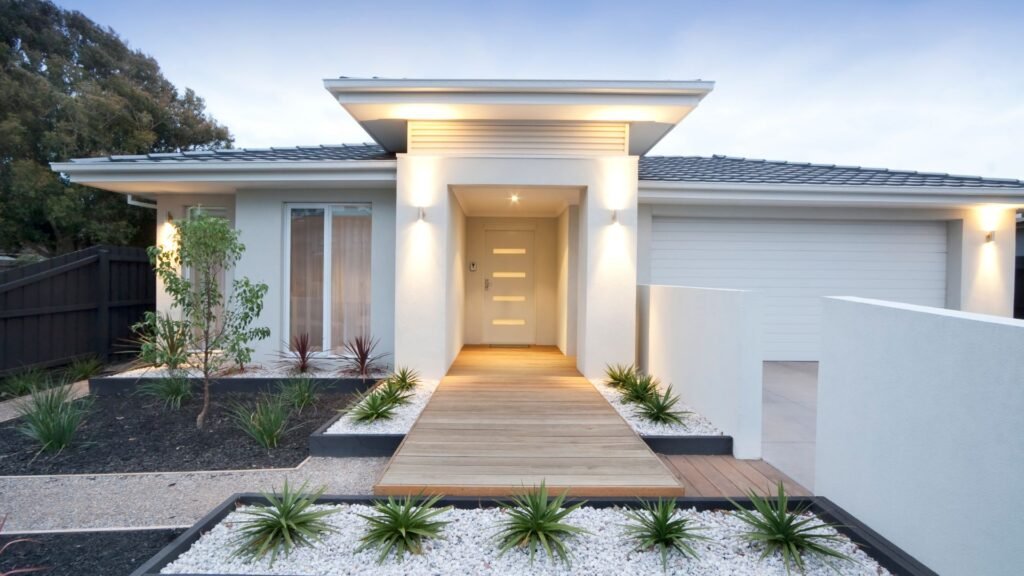Welcome to your go-to guide for bathroom renovation ideas in NZ, whether you’re upgrading a small space in Auckland or refreshing a family bathroom in Christchurch, this post gives you practical, budget-friendly ideas that actually work. From smart storage to water-saving fixtures, we’ll cover proven ways to make your bathroom more functional, modern, and suited to Kiwi homes. You’ll find tips that match New Zealand’s lifestyle, climate, and housing styles, so you can renovate with confidence and avoid common mistakes. Let’s dive into ideas that help you get the most out of your space, without wasting time or money.
If you’re looking for bathroom renovation ideas in NZ, focus on space-saving layouts, floating vanities, walk-in showers, water-efficient fixtures, and natural lighting. Use large tiles, heated towel rails, and smart storage to boost function and style. Tailor your choices to New Zealand’s climate and home sizes for the best results.
Table of Contents
Know Before You Reno: What To Consider First
Before jumping into a bathroom renovation, there are key things every New Zealand homeowner should think about. Planning ahead helps you avoid costly mistakes, delays, and compliance issues. Whether you’re renovating a small ensuite in Auckland or a family bathroom in Christchurch, these factors apply across the board.
Set A Realistic Budget Based On NZ Costs
Start by setting a clear, realistic budget. In New Zealand, bathroom renovation costs can vary depending on the size of the space, the materials you choose, and how much plumbing or electrical work is needed. On average, you can expect to spend around $15,000 to $25,000 for a mid-range renovation. High-end upgrades can go beyond $30,000, especially if you’re relocating plumbing or adding luxury features like underfloor heating or stone finishes.
Always factor in a buffer of at least 10–15% for unexpected expenses. Labour costs in NZ can also be higher in major cities like Auckland and Wellington, so it pays to get multiple quotes and compare.
Check Local Council Codes And Permit Requirements
Not all bathroom renovations need consent, but some do, especially if you’re moving walls, installing new windows, or altering plumbing or electrical systems. It’s your responsibility as a homeowner to check with your local council. Failing to do this can result in fines or insurance issues down the line.
For example, if you’re converting a separate toilet into an open-plan bathroom or adjusting the room’s structure, building consent is likely required. Visit your local council’s website or speak to a licensed professional to get clear guidance before starting work.
Hire Licensed NZ Tradies For Plumbing And Electrical
Don’t cut corners when choosing tradespeople. In New Zealand, plumbing and electrical work must be done by licensed professionals. This isn’t just a safety issue, it’s the law. Always ask for proof of qualification and check their references or reviews.
For general building work, consider hiring a Licensed Building Practitioner (LBP). These professionals are trained to meet NZ’s building code standards. Reliable tradies will also help you stay on schedule, avoid rework, and ensure that your warranty remains valid if you’re using supplier-provided fixtures or fittings.
Prioritize Waterproofing And Ventilation
Bathrooms are high-moisture areas, and poor waterproofing can lead to mould, rot, or serious structural damage. In NZ, proper waterproofing is not just recommended, it’s often required under the building code. Always use a certified waterproofer, and ensure the materials meet NZ standards.
Ventilation is just as important. Good airflow reduces condensation, protects your paint and tiles, and extends the life of your bathroom fixtures. If you don’t have a window, invest in a quality extractor fan with enough power for your bathroom size. This is especially crucial in colder, damp-prone regions like the South Island.
Understanding these basics before you start renovating helps you make smart decisions. It also ensures your project meets New Zealand’s safety, legal, and quality standards, saving you stress later on.
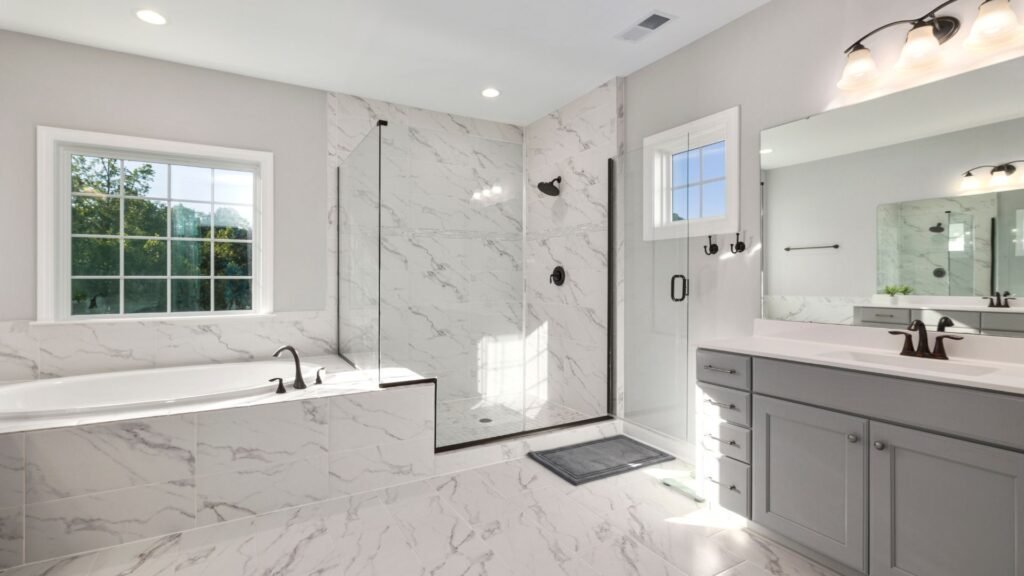
Upgrade To A Walk-In Shower
A walk-in shower is one of the most practical and stylish bathroom renovation ideas for NZ homes. It works well in both small and large spaces, making it a smart choice for almost any layout. If your bathroom feels cramped or outdated, replacing a bulky bathtub or old shower with a walk-in design can instantly create a cleaner, more open look. This style is especially popular in cities like Auckland and Wellington, where homeowners are aiming for modern functionality without sacrificing comfort.
One of the biggest advantages of a walk-in shower is how easy it is to maintain. Without doors, frames, or deep bases to worry about, cleaning becomes quicker and more straightforward. This setup also reduces slip risks, making it a safer option for households with children, elderly family members, or anyone with mobility concerns.
When planning your walk-in shower, consider the difference between tiled and acrylic bases. Tiled showers offer a custom finish and can match the overall look of your bathroom, but they may cost more and take longer to install. Acrylic bases, on the other hand, are faster to fit and easier to clean, though they offer fewer design options. Both are widely used in NZ homes, so your choice should depend on your budget, timeline, and design goals.
By upgrading to a walk-in shower, you’re improving usability, safety, and style all at once. It’s a simple but high-impact change that delivers long-term benefits and suits the modern needs of New Zealand homeowners.
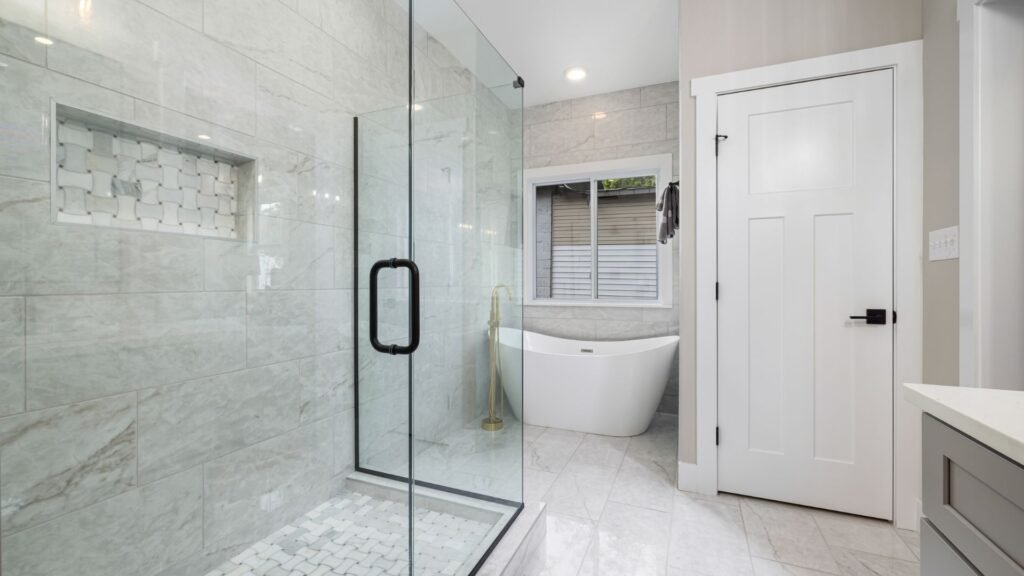
Floating Vanities For A Modern Look
Floating vanities are a popular choice in many New Zealand bathroom renovations, and for good reason. These wall-mounted units create the visual effect of more space by exposing the floor underneath. This small design change makes a big impact, especially in smaller bathrooms often found in older NZ homes or apartments.
Homeowners love floating vanities because they make cleaning easier. With open floor access, you can easily mop and remove dust or moisture that tends to gather around baseboards. This is especially useful in humid areas like bathrooms, where mold and mildew can build up if surfaces are hard to reach.
When choosing a floating vanity, it’s important to pick materials that can handle New Zealand’s damp climate. Opt for moisture-resistant finishes such as marine-grade plywood, PVC, or high-pressure laminate. These materials are less likely to warp, swell, or deteriorate over time, making them ideal for long-term use in wet environments.
Floating vanities also offer flexibility in design. You can choose from various sizes, shapes, and configurations to suit your bathroom layout. Whether you prefer a sleek modern style or a more natural wood finish, there are options that work well with other popular NZ bathroom features like walk-in showers and large-format tiles.
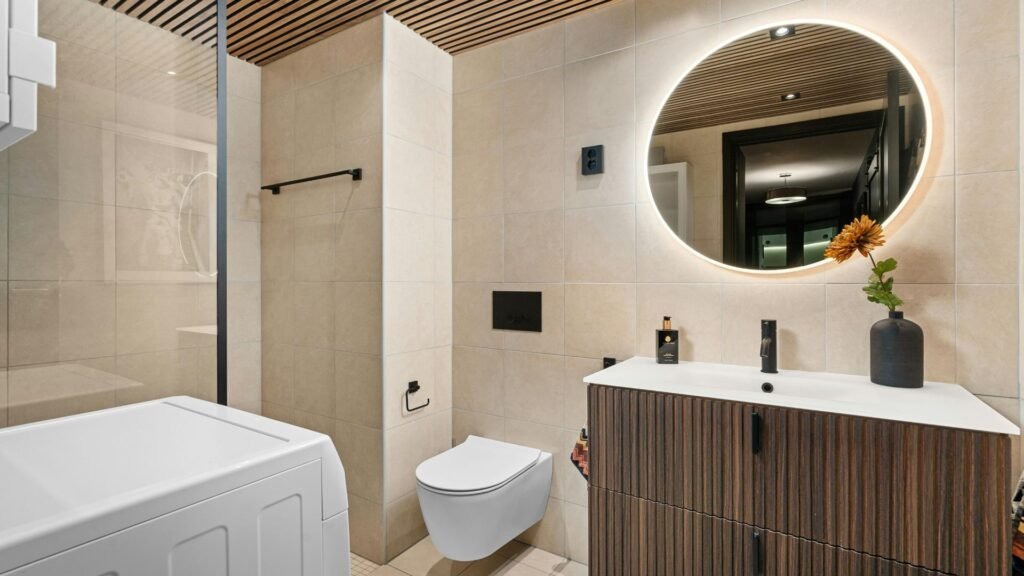
Use Large Tiles For A Spacious Feel
Large tiles are a smart choice if you want to make your bathroom feel bigger, cleaner, and more modern. In many New Zealand homes, especially older ones, bathrooms tend to be on the smaller side. Choosing larger tiles helps visually expand the space by reducing the number of grout lines, which often break up the flow of the floor or wall. Fewer grout lines mean less visual clutter and a smoother, more continuous surface. It also makes cleaning much easier, which is a practical win for busy households.
When picking tile colors, lighter shades work especially well in NZ bathrooms that lack natural light. Many homes in cooler or shadier regions like Wellington or Dunedin can benefit from tiles that reflect light rather than absorb it. Soft greys, off-whites, and beige tones can brighten up the space without being too harsh or clinical. These colors bounce more light around the room, creating a fresher, more open feel.
You’ll also need to decide on the material, natural stone or porcelain. Natural stone, like marble or travertine, offers a more organic, textured look, but it can be more expensive and requires sealing. Porcelain, on the other hand, is highly durable, moisture-resistant, and easier to maintain, making it a great fit for high-traffic family bathrooms. Either option can work well, as long as it fits your style, budget, and how much maintenance you’re comfortable with. Just make sure to choose slip-resistant finishes for flooring to keep things safe and functional.
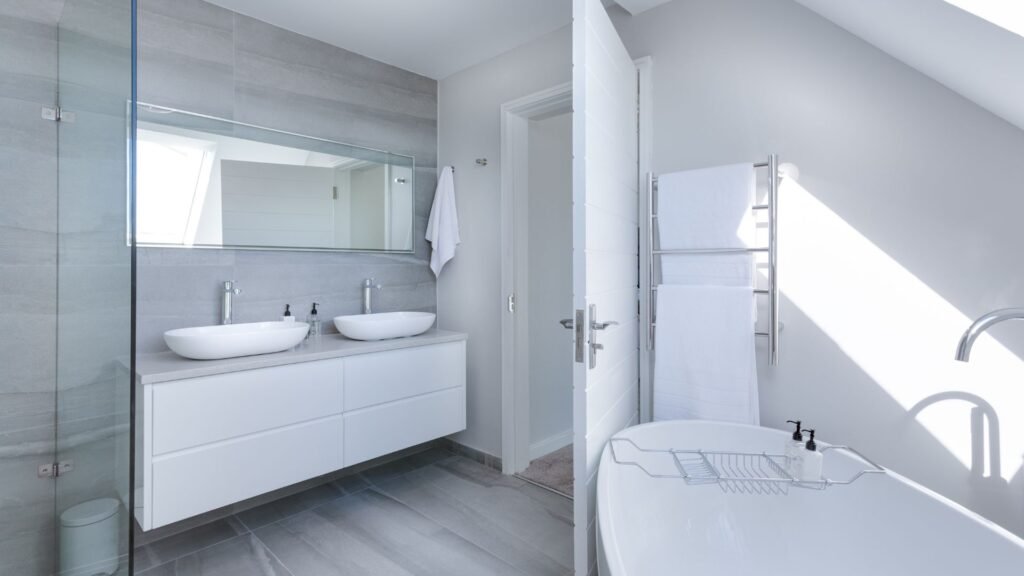
Go Green With Water-Saving Fixtures
Reducing water usage in your bathroom isn’t just good for the environment, it’s also smart for your wallet. In New Zealand, many households are shifting toward eco-conscious renovations, and one of the easiest places to start is by upgrading to water-saving fixtures. These small changes can make a big difference over time.
Start by replacing your old toilet with a low-flow or dual-flush model. Traditional toilets can use up to 12 litres per flush, while modern low-flow versions use as little as 4.5 litres. That means less water wasted and lower water bills without sacrificing performance.
Another simple but effective upgrade is switching to aerated taps. These fixtures mix air with water, reducing the flow rate without affecting water pressure. The result? A smooth, steady stream that feels just as powerful but uses significantly less water.
Don’t overlook your shower. Water-saving showerheads are designed to cut down on water use while still delivering a satisfying shower experience. Some models in New Zealand use as little as 6 to 9 litres per minute, compared to older models that may use 15 litres or more.
While not all regions in NZ offer rebates for these eco-friendly upgrades, it’s worth checking with your local council. Some may offer water conservation tips, free kits, or incentives for switching to efficient fixtures. Even without rebates, the long-term savings on your water bill make these upgrades a smart choice.
By installing water-saving fixtures in your bathroom, you’re not only reducing your household’s water consumption, you’re also adding long-term value to your home. These upgrades are especially appealing to environmentally conscious buyers, making your bathroom renovation a smart move both now and in the future.
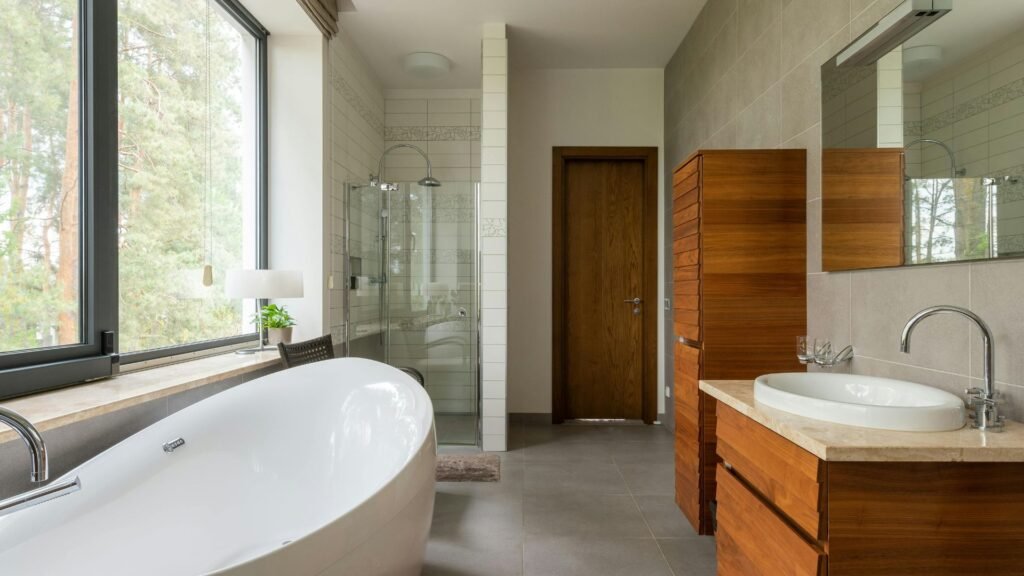
Smart Storage For Small Bathrooms
Running out of space in your bathroom? You’re not alone. Many New Zealand homes, especially older or smaller ones, have compact bathrooms with limited room for essentials. But with the right storage ideas, you can keep everything organized without making the space feel cluttered. Here’s how smart storage can transform even the tiniest bathroom into a functional, stylish area.
- Wall-mounted cabinets are one of the easiest ways to add storage without taking up floor space. Install them above the toilet or beside the mirror to hold your daily items. Choose slimline designs that don’t stick out too much, so you don’t bump into them while moving around. Many Kiwi homeowners also opt for mirrored wall cabinets, which offer both storage and functionality.
- Mirror storage pulls double duty. Instead of using a plain wall mirror, go for a mirrored cabinet. It looks sleek, adds depth to the room, and gives you hidden space for toothbrushes, skincare, and first aid items. This works especially well in bathrooms with limited vanity space, a common feature in small NZ homes.
- Built-in shelves are perfect for making use of narrow or awkward walls. They can be recessed into the wall between studs or added to areas like above the bathtub. These shelves provide a tidy spot for towels, extra toilet paper, or even indoor plants. Built-ins also create a more streamlined look compared to freestanding storage units.
- Corner shelves help you make the most of every square metre. Corners are often wasted in small bathrooms, but they’re ideal for adding a few shelves without affecting foot traffic. Use them for soap, shampoo, or small decorative items. They’re especially helpful in tight shower areas.
- Custom joinery is a smart solution if your bathroom has an unusual layout or non-standard dimensions. A tailored vanity or cabinet can be designed to fit perfectly, giving you maximum storage with minimal space. Local NZ joiners can often design pieces that suit your bathroom’s style and moisture conditions, making them more durable and practical in the long run.
By using these smart storage solutions, you can make your small bathroom feel bigger, more organized, and easier to live with, without needing a full renovation. Always think vertically, choose multi-use features, and keep floor space as open as possible. This not only improves your bathroom’s functionality but also adds value to your home.
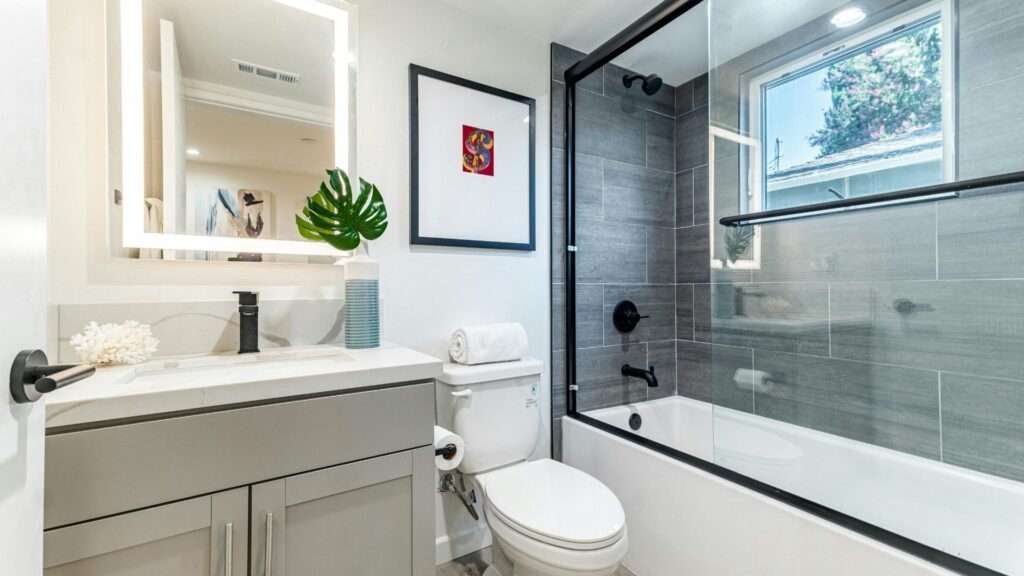
Heated Towel Rails And Flooring
Heated towel rails and underfloor heating are smart additions to any bathroom, especially if you live in one of New Zealand’s colder regions like the South Island. These upgrades do more than add a touch of comfort, they also offer practical benefits that improve your daily routine.
A heated towel rail keeps your towels dry, warm, and ready to use, which is especially helpful during winter. It also reduces dampness and musty smells, which are common in poorly ventilated bathrooms. In regions with high humidity or colder temperatures, this small upgrade can make a big difference in maintaining a fresh and dry space.
If you want to take it a step further, consider adding underfloor heating. This feature creates an even, consistent warmth that traditional heaters often fail to provide. It’s ideal for tiled bathrooms, where cold floors can be uncomfortable in the morning or after a shower.
Both towel rails and underfloor heating now come in energy-efficient models that are cost-effective to run. Some systems even include timers or thermostats, allowing you to heat your space only when needed. This means you can enjoy comfort without worrying about energy bills.
Adding these features doesn’t mean turning your bathroom into a luxury spa. It’s about improving function, comfort, and value, all while keeping things simple. For NZ homes, especially in colder climates, heated towel rails and flooring strike the right balance between practicality and everyday comfort.
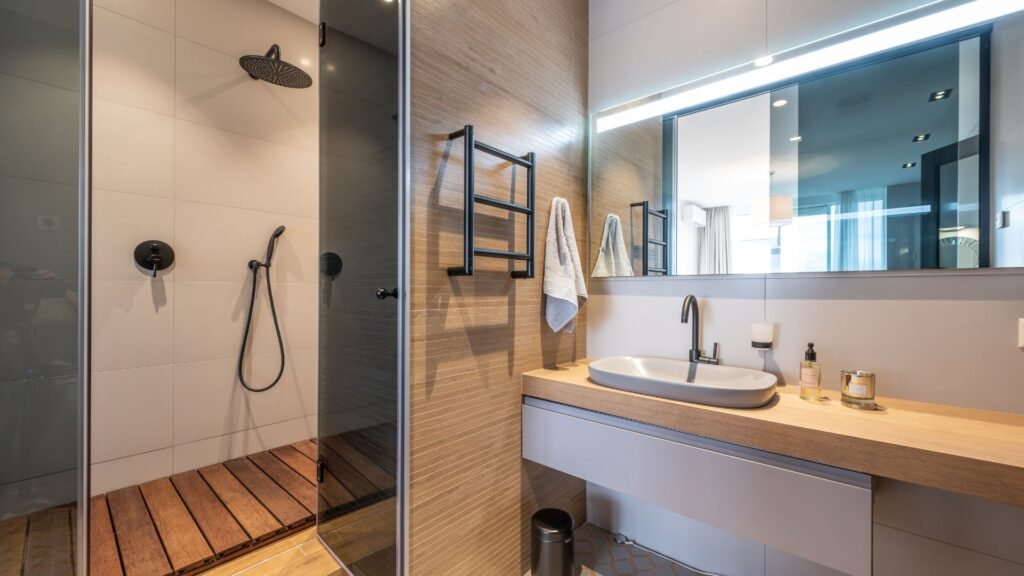
Natural Lighting With Skylights Or Windows
Many older homes across New Zealand have bathrooms that feel dark or closed off, especially those with limited wall space or poor window placement. Adding natural lighting through skylights or windows is one of the most effective ways to brighten up these spaces and make them feel more open, clean, and inviting.
Natural light improves not only the look but also the overall functionality of your bathroom. It helps reduce moisture buildup, supports better ventilation, and can even lower your reliance on artificial lighting during the day, saving you money on power bills. For NZ homes in regions with less sunlight during winter, maximizing daylight becomes even more important.
If privacy is a concern, especially in densely populated neighborhoods, frosted glass windows are a great option. They allow plenty of light in while keeping views blocked from the outside. You still get a bright, airy feel without sacrificing comfort or security.
In bathrooms with limited ceiling or wall space, solar tubes offer a smart alternative. These are compact, energy-efficient systems that capture sunlight through a small dome on the roof and channel it into the room using a reflective tube. They’re ideal for tight or windowless bathrooms where traditional skylights aren’t feasible.
Choosing the right type of natural lighting depends on your home’s layout, budget, and renovation goals. But whether you go for a skylight, a new window, or a solar tube, adding more natural light can make a dramatic difference in how your bathroom looks and feels, especially in older NZ homes.
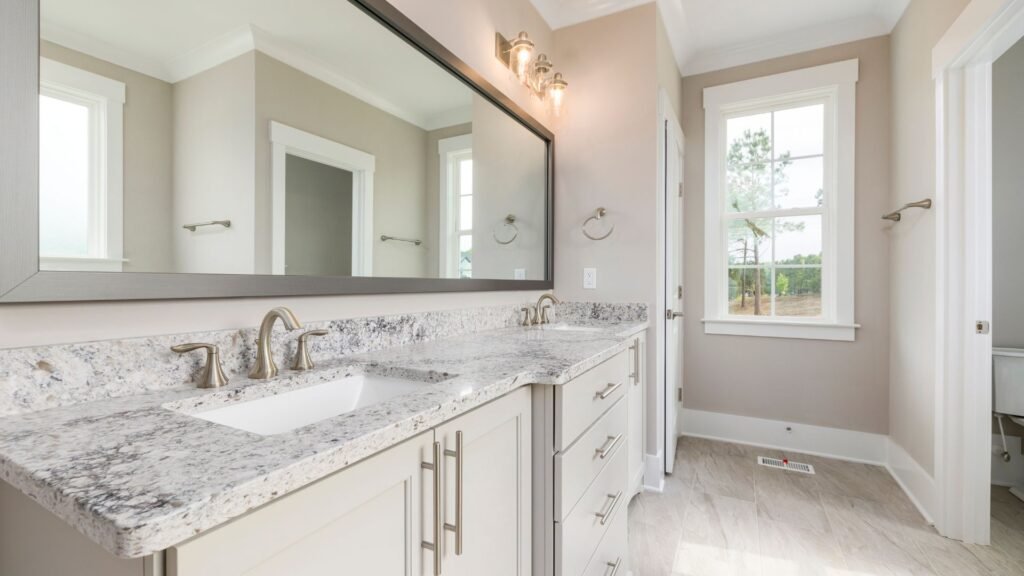
Bold Feature Walls Or Tiles
Adding a bold feature wall or statement tile is one of the easiest ways to give your bathroom a unique personality without overspending. This idea works especially well in New Zealand homes where bathrooms are often designed with function in mind but can lack visual interest.
A feature wall lets you play with texture, color, or pattern in just one area, typically behind the vanity, in the shower recess, or as a backdrop to a freestanding tub. This approach creates a focal point that elevates the entire look without needing to tile the whole room in premium materials.
If you’re renovating on a budget, look for clearance or end-of-line options from local NZ tile suppliers. Many offer great deals on high-end designs when only a few square meters are needed. Suppliers based in Auckland, Wellington, and Christchurch often showcase trending tiles that suit both modern and classic NZ interiors.
To avoid overpowering the space, keep bold designs limited to one area. Too many competing patterns or colors can make a bathroom feel cramped or chaotic, especially in smaller New Zealand homes. Balance the look with neutral tones in the rest of the space, white, light grey, or soft timber finishes work well.
Whether you choose geometric patterns, textured stone, or dark moody tones, a well-placed feature tile adds depth and personality while keeping your renovation costs in check. It’s a smart way to make your bathroom feel custom-designed, even if you’re working within a tight budget.

Add A Freestanding Tub
Freestanding tubs have become a standout feature in modern bathroom renovations across New Zealand. They add instant style, elevate the look of any space, and offer a relaxing, spa-like experience that many homeowners are now seeking, especially in master bathrooms. Unlike built-in tubs that are fixed into corners or against walls, a freestanding tub can be placed wherever plumbing allows, giving you more design flexibility and visual impact.
For New Zealand homes, it’s important to choose the right size and shape to suit the space. If you have a smaller home or apartment in cities like Auckland or Wellington, a compact freestanding tub works well without overwhelming the room. In larger homes, especially in regional areas with more space, you can go for deeper or longer designs that invite a more luxurious soak.
When deciding between a freestanding and a built-in tub, weigh the pros and cons. Freestanding tubs are visually striking and easier to install in terms of not needing surrounding tiles or cabinetry. However, they usually require more floor space and can be harder to get in and out of for children or older adults. Built-in tubs, on the other hand, offer more storage around the edges and are often easier to clean due to their sealed edges.
Whether you’re aiming for a bold statement or a minimalist touch, a freestanding tub can become the centerpiece of your bathroom renovation, especially when paired with elegant tapware and thoughtful lighting. Just make sure to factor in plumbing requirements and ensure your floor structure can support the weight when filled.
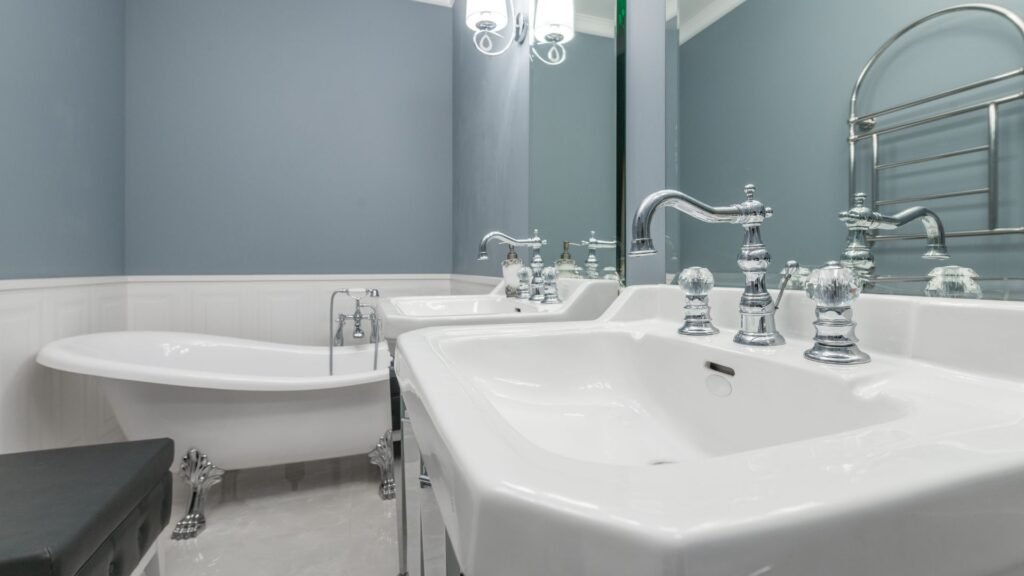
Combine Function + Style With Local Materials
Choosing local materials for your bathroom renovation in NZ is a smart move that blends both function and style. It’s not just about the look, it’s about supporting local craftsmanship, reducing your carbon footprint, and making choices that hold up to New Zealand’s climate and lifestyle.
Start by looking at NZ-made products when selecting fixtures, surfaces, and cabinetry. Locally made materials are often better suited for the humidity, temperature changes, and building standards found throughout New Zealand. You’re also more likely to get better support or replacements if anything goes wrong.
Timber vanities are a great example. Native or sustainably sourced timber offers warmth, character, and long-lasting quality. Pair them with brass tapware for a timeless finish that resists corrosion, especially important in coastal areas like Tauranga or Napier where salt air can wear down cheaper materials.
When choosing colours and finishes, lean into natural tones. Soft whites, muted greens, light browns, or stone-inspired greys feel calm and clean, while still staying modern. These tones also hide water spots and wear better over time, which is ideal for family homes.
Eco-conscious materials aren’t just a trend, they’re a practical investment. By choosing sustainable or recycled materials, you help reduce the environmental impact of your renovation. Many NZ suppliers now offer low-VOC paints, recycled tiles, and responsibly sourced wood. These choices lower your carbon footprint without sacrificing design.
In short, mixing functionality with locally sourced style makes your bathroom more durable, more beautiful, and better for the environment. It’s a win on every level, practical, personal, and smart.
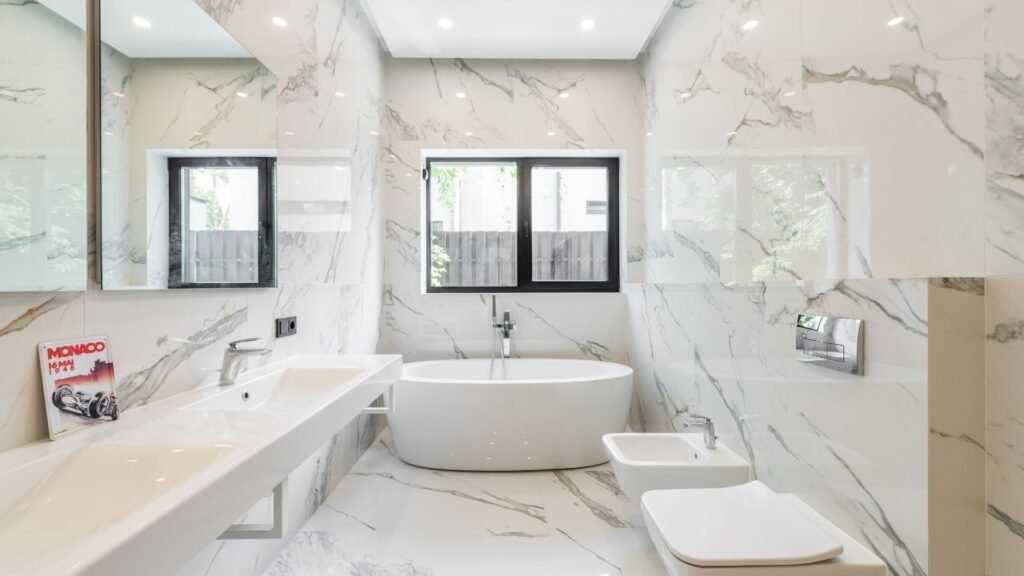
Common Bathroom Reno Mistakes To Avoid
Renovating a bathroom is a big investment, and while fresh designs and upgrades are exciting, it’s easy to make costly mistakes along the way. If you’re planning a bathroom renovation in New Zealand, paying attention to these common errors can save you time, money, and stress. Here’s what to avoid if you want your project to run smoothly and deliver long-term value.
- Ignoring Ventilation
Proper ventilation is one of the most overlooked parts of a bathroom renovation. Without good airflow, moisture builds up quickly, especially in humid regions like Auckland or Wellington. Over time, poor ventilation leads to mold, mildew, and damage to paint, tiles, and cabinetry. Always install an extractor fan that vents to the outside, not just the ceiling cavity. Also, consider adding windows or skylights to promote natural airflow. Good ventilation keeps your bathroom dry, safe, and easier to maintain. - Choosing Style Over Function
Everyone wants a stylish bathroom, but looks should never come at the expense of usability. Trendy vanities, oversized tubs, or floating sinks might look great online, but if they don’t suit your daily routines or the space you have, they’ll cause frustration later. Before you lock in your design, think about who uses the bathroom, how much storage is needed, and how traffic flows through the space. Smart design balances both style and practicality, especially in compact NZ homes. - Underestimating Costs Or Timelines
Bathroom renovations often take longer and cost more than expected. A simple fixture replacement can reveal plumbing issues or waterproofing failures that need urgent fixes. Many NZ homeowners also forget to budget for permits, tradies, or unexpected delays due to weather or product availability. Always get multiple quotes, allow for a 10–20% contingency, and work with professionals who give realistic timelines. Planning ahead reduces stress and helps you stay in control of your budget. - Not Hiring Licensed Professionals
DIY might work for painting walls, but when it comes to plumbing, electrical work, or waterproofing, hiring licensed professionals is essential. In New Zealand, legal compliance matters. Poor installations can void your insurance, create safety hazards, and lead to expensive rework. Always check if your builder, plumber, or electrician is licensed and experienced with bathrooms. A qualified tradie might cost more upfront, but they’ll do the job right the first time, saving you time and money in the long run.
Avoiding these mistakes helps ensure your bathroom renovation is a success. Focus on smart planning, quality work, and practical design choices that fit your space and lifestyle. By learning from common errors, you can enjoy a bathroom that looks good, works well, and adds real value to your NZ home.
Ready to start your bathroom renovation? Get more expert tips, inspiration, and the right team to bring your ideas to life. Visit us to explore how we can help.

FAQs: About Bathroom Renovation Ideas In NZ
What is the average cost of a bathroom renovation in NZ?
The average bathroom renovation in New Zealand costs between $15,000 and $25,000, depending on the size, materials, and level of work required. Budget renovations can start from $10,000, while high-end projects may exceed $30,000.
Do I need a building consent to renovate my bathroom in NZ?
You may need building consent if you’re making structural changes, moving plumbing, or altering waterproofing. It’s best to check with your local council before starting work.
What are some space-saving ideas for small NZ bathrooms?
Floating vanities, wall-mounted cabinets, large mirrors, corner shelving, and walk-in showers are great for maximizing space in small bathrooms.
How can I make my bathroom more energy- and water-efficient?
Install low-flow toilets, aerated taps, water-saving showerheads, and LED lighting. These upgrades help reduce water and power bills while being eco-friendly.
What are the most popular bathroom design trends in NZ right now?
Walk-in showers, matte black fixtures, large tiles, natural wood finishes, and minimalist layouts are trending across many New Zealand homes.
Can I renovate my bathroom on a budget in NZ?
Yes. Focus on cosmetic upgrades like painting, replacing tapware, updating lighting, and installing affordable vanities or mirrors. Prioritize changes that offer the most impact for your budget.
How long does a typical bathroom renovation take in NZ?
A standard renovation takes 2 to 4 weeks, depending on the complexity of the job, material availability, and whether you’re making plumbing or structural changes.
What should I look for when hiring a bathroom renovator in NZ?
Check for licensed tradespeople, clear quotes, a solid portfolio of past work, and positive reviews. Ask if they follow NZ building codes and provide waterproofing guarantees.
What materials work best for NZ bathroom conditions?
Moisture-resistant materials like porcelain tiles, treated timber, PVC panels, and stainless-steel fixtures are ideal for NZ’s varying climate and humidity levels.
Should I renovate my bathroom before selling my house?
Yes, a well-designed bathroom can boost your home’s value and appeal. Even small upgrades can improve presentation and help attract potential buyers.
Conclusion
Before you start your bathroom renovation, take time to review what ideas will suit your home, budget, and lifestyle. From walk-in showers and floating vanities to large tiles, smart storage, and water-saving fixtures, each idea in this guide is designed to work for real New Zealand homes. Whether you’re in a compact city apartment or a family home in the suburbs, planning around NZ-specific factors like climate, available materials, and building regulations can make a big difference in both the look and function of your bathroom. Always aim for a balance between style and practicality, and don’t rush decisions, especially when it comes to plumbing, lighting, and layout. If you have questions about what might work best for your space or want advice tailored to your home, feel free to leave a comment or reach out. We’re here to help you renovate with confidence.

